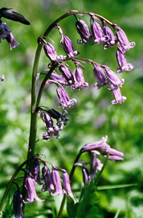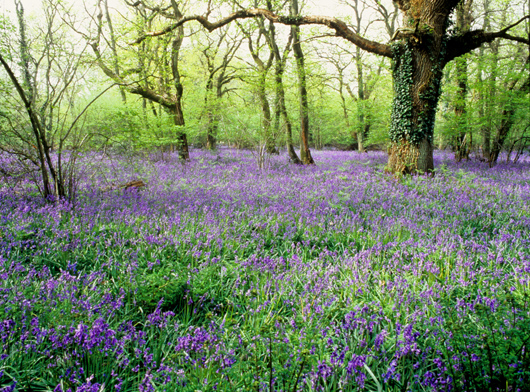UK: Recovering from the winter blues
06.04.10
The unusually harsh winter has taken its toll on many UK species while others seem blissfully unaware and are merely getting on with business as usual. But one plant  which has almost certainly been stalled by the cold weather is the bluebell (Hyacinthoides non-scripta).
which has almost certainly been stalled by the cold weather is the bluebell (Hyacinthoides non-scripta).
Arguably Britain's favourite wild flower it appears as if by magic, carpeting our woodland floors with its graceful little flower spikes, but according to the National Trust the herald of summer will be about three weeks late this year. Known to appear as early as April 1st in some of the warmer western climes they tend to be at their peak in late April and early May; but mid-May is looking like the bookies favourite at the moment as the cold weather continues unabated. In fact as I look out the window onto a cold, grey day I'd stay firmly under wraps too if I was a bluebell.
Bluebells aren't the only dawdlers this year. According to Stephen Moss,in yesterday's Guardian, wood anenomes (Anenome nemorosa) are also lagging way behind last year. But I was very pleased to see the first flowering primroses (wild at least) of the year while walking at the weekend and daffodils are finally brightening up the landscape too.
In this interactive digital age there are now hundreds of different ways to watch the slow spread of of spring unravelling around the country (but of course none of them are as interactive as getting out there and discovering for yourself!) Plant Talk has already highlighted The Woodland Trust's Nature's Calendar, but The National Trust has also launched Bluebell Watch, which will list the best sites in the country for bluebells in the coming months. BBC's Springwatch has been a success for many years now and events like the RSPB's Big Garden Birdwatch seem to be successful in engaging wider and wider audiences with nature.
One of the best sites for seeing bluebells in the UK is Plantlife's Ranscombe Farm reserve in Kent. This beautiful 560 acres site has a beautifully diverse mix of habitats, and is a UK botanist's Shangri-La. If you're going to visit in April or May look out for early-purple orchids, fly orchids, lady orchids, and of course bluebells.

Bluebells at Plantlife's Ranscombe Farm reserve in Kent, UK.
This 560 acre site is one of the true jewels in the UK botany crown.
Photos in this article © Bob Gibbons/Plantlife
Related links:
UK: Ghost Orchid (slight return)
09.03.10
![]() News emerged yesterday that a Ghost Orchid (Epipogium aphyllum) was found in the UK in 2009 (link to Guardian story).
News emerged yesterday that a Ghost Orchid (Epipogium aphyllum) was found in the UK in 2009 (link to Guardian story).
UK: Where have all the hunter-gatherers gone?
04.03.10
 Plant Talk invited Jennifer Lee from the University of Liverpool to share her knowledge on modern day wild food foraging and its implications for plant conservation.
Plant Talk invited Jennifer Lee from the University of Liverpool to share her knowledge on modern day wild food foraging and its implications for plant conservation.
09.02.10
 It's often said that we've all got a book inside us just waiting to be unleashed onto the world, but perhaps we should start with something smaller. Like a list.
It's often said that we've all got a book inside us just waiting to be unleashed onto the world, but perhaps we should start with something smaller. Like a list.
UK: The Great Fen – last chance for endangered fen plants?
15.01.10
![]() Alan Bowley from Natural England talks about this historic landscape and what the future looks like for its populations of special plants.
Alan Bowley from Natural England talks about this historic landscape and what the future looks like for its populations of special plants.